| |
|
||||||||||||||||||||||||||
| |
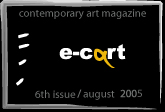 |
|
|
||||||||||||||||||||||||
 |
 |
 |
|
||||||||||||||||||||||||
 |
|
|
|
||||||||||||||||||||||||
| |
|
||||||||||||||||||||||||||
 |
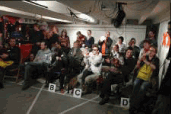 |
|
 |
|
|
||||||||||||||||||||||
 |
|
||||||||||||||||||||||||||
 |
|
||||||||||||||||||||||||||
| |
|
|
|||||||||||||||||||||||||
 |
 |
|
|
||||||||||||||||||||||||
| |
|
|
|||||||||||||||||||||||||
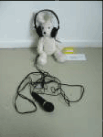 |
|
 |
 |
|
|||||||||||||||||||||||
| |
 |
|
 |
|
|
|
|
|
|||||||||||||||||||
| |
|
||||||||||||||||||||||||||
| |
|
||||||||||||||||||||||||||
 |
|
||||||||||||||||||||||||||
 |
|
||||||||||||||||||||||||||
 |
|
||||||||||||||||||||||||||
| |
|
||||||||||||||||||||||||||
| |
|
|
|||||||||||||||||||||||||
 |
|
||||||||||||||||||||||||||
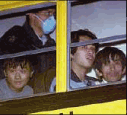 |
|
|
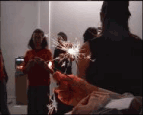 |
|
|||||||||||||||||||||||
| |
|
|
|
||||||||||||||||||||||||
| |
|
|
|
|
|
|
|
|
|
|
|
|
|
|
|
|
|
|
|
|
|
|
|
|
|
|
|
Hello Stranger (2004)
Without much initial explanation, the audience is invited to embark on a small bus with darkened windows. As the door slams behind them a jolted ride begins. From time to time the bus stops, and a randomly chosen passenger is removed and taken away by one of the performers. After a short moment the performer returns alone and the ride continues like this until the bus is empty.
Each member of the audience has been distributed to a number of prearranged locations in the area. These include the local fire department, an old lady’s home, a Turkish bakery, an Iranian night shop, and the kitchen of a restaurant, and a canal boat, amongst many others.
The idea is that each person spends one hour at the place they have been allocated to. The hosts had been instructed to treat their guests in any way they wish, this could be by asking them for help, showing them around or simply talking with them for a while; in any case to go about their usual activities as they would. The guests on the other hand, would have to do their best to adjust within their surprise situation. We learned later that these situations varied from learning how to make baklava to going on an emergency fire call with the fire fighters team!
After an hour each member of the audience is picked up by the bus again and taken back to the gallery where they can share their experiences.
The idea for this piece emerged from thoughts about illegal employment, immigration and smuggling of people across borders. Each of these issues found its representation within the structure of the piece, however not to extent of spotlighting them.
XXX (2005)
XXX was a performance advertised as an intensive course in citizen integration. Such courses are compulsory in the Netherlands, their aim being the harmonious co-existence of a multicultural society. We took the model of the familiar naturalization process for XXX, and customised it to result in a no less harmonious outcome. The idea was to transform our audience into an orchestra, who will play the Dutch national anthem, using objects they had in their bags, i.e. keys, credit cards, plastic bags, etc.
On their entrance in the gallery, each persons bag was searched and depending on what objects were found in it, he/she would be directed to pre-designated areas in the space (sections A,B,C etc). After the group was distributed, we revealed to them the aim of the upcoming activity, and then placed the matter in the hands of a professional conductor. He proceeded to orchestrate the ensemble, section by section through the anthem, until they were ready to perform the first part of the national hymn for an official recording.
Maslowmiracle (2004)
Maslowmiracle was a performance-installation, based on the hierarchical model of human needs developed by Abraham Maslow (1970).The idea was to construct a spatial representation of Maslow’s hierarchy in the space, a kind of ‘parcours’, with clearly indicated routes and designated work areas, where box–sets of props were provided. Using the progressive pyramid model, we designed a game structure, consisting of seven stages of achievement. Each level represents a stage from the original model and will include several examples of its characteristics. Each of these examples corresponds with a specially designed for it action, which will be clearly instructed, and its position in the space – indicated by a number and colour code.
This introduction each participant received on entrance in the gallery:
““Maslow-miracle is an efficient system for do-it-yourself life improvement, based on Maslow’s hierarchy of human needs. It is a model that defines two groupings: deficiency needs and growth needs. Within the deficiency needs each lower need must be met before moving to the next higher level. If, and only if deficiency needs are met, the individual is ready to act upon his growth needs, and only then he will accomplish self-actualisation.
Maslow-miracle is a linear and irreversible structure, it is obligatory to begin with the most basic need, indicated by red colour, and move upward towards self–actualisation indicated by pink. Maslow-miracle offers possibilities to customise solutions to the nature of your individual needs.
Within each level you may choose one area of deficiency that needs improvement most urgently. When successfully completed the task you may advance to the next level.
Should there be an area within the hierarchy, where you need no improvement, you may proceed to the one that follows it. However we cannot guarantee permanent results if you do this more than once. Take into consideration that there is a time limit, which will be announced by this signal (whistle). Immediately stop what you are doing and wait for further instructions.”
Zhana Ivanova & Uta Eisenreich

